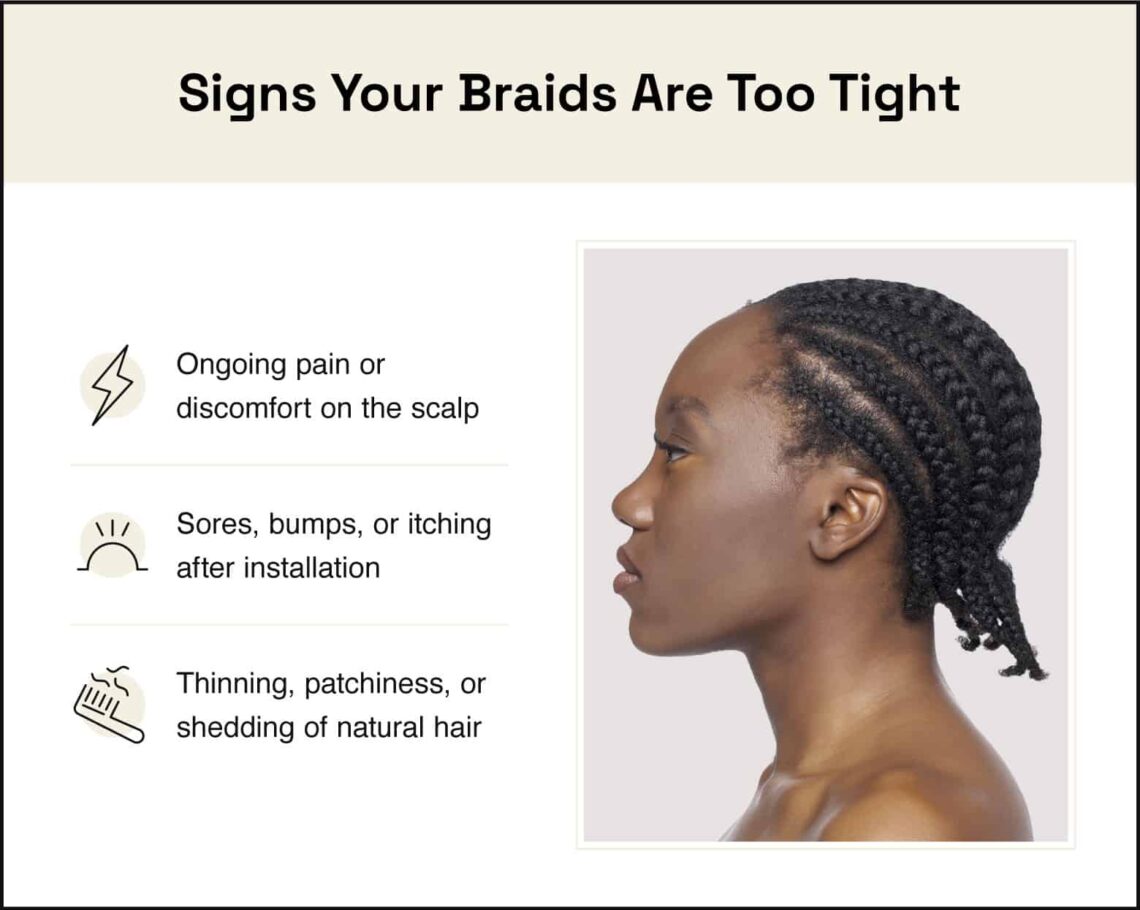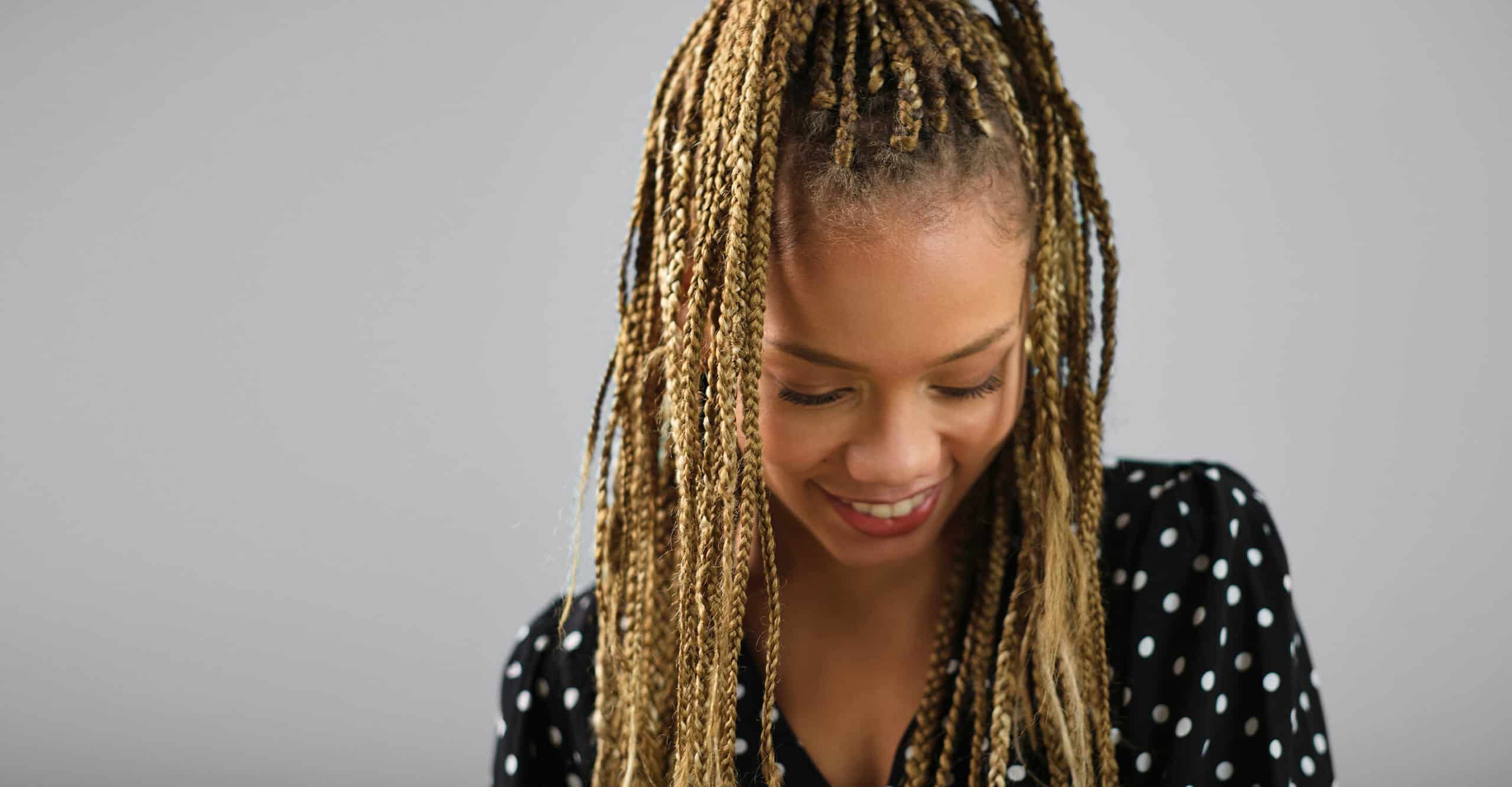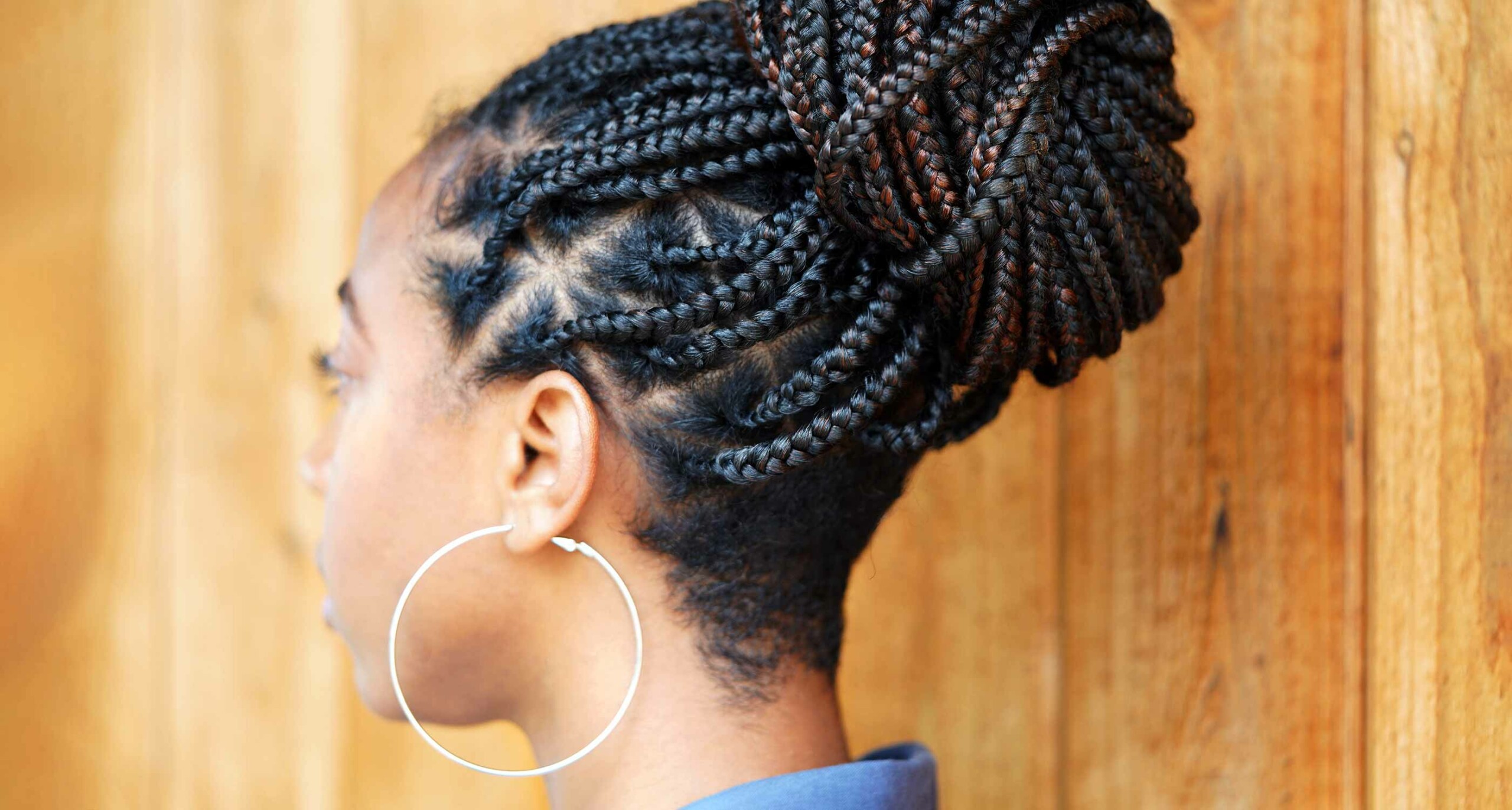How to Loosen Tight Braids: 11 Tips to Try

If you’ve ever sat in a salon chair excited for a fresh set of braids, but left itching for relief from tight braids, you’re not alone. Thankfully, you don’t need to be uncomfortable to enjoy a long-lasting hairstyle. In this guide, we’ll dive into some tips on how to loosen tight braids at home, as well as answer some common questions.
Tip No. 1: Use a comb to loosen braids
If you’re pressed for time or want to save yourself an additional trip to the salon, you may be able to use tools you have inside your home already. Gently run the long end of a rat tail comb. Carefully wiggle to loosen the braid from the scalp.
Be sure to use a very gentle hand so you don’t ruin your braids. If you’re particularly worried about your braids coming undone, try a less invasive method first.
Tip No. 2: Wet hair with warm water
The last thing you may want to do is completely soak your new hairstyle. However, wetting your hair with warm water can provide some braid tension relief. Hop in a warm shower for a few minutes and softly massage your scalp at the base of the braids to loosen them up.
If you’d rather not completely drench your new braids, take a towel and run it under some warm water. Wring the wet towel out and wrap it around your head, letting it sit for at least an hour.
You can also try patting your braids down. Run some warm water over a towel and place the towel over your head. Make sure the towel isn’t soaking wet before lightly patting your scalp down. Carefully pat along the base of the braids until you’ve gone through your whole scalp. Allow your hair to air-dry afterwards.
Tip No. 3: Use a hair steamer
Your local beauty store can also provide helpful tools for braids that are too tight. Head over to your preferred location and pick up a hair steamer. If you’re someone who typically wears braids, a hair steamer is a great non-invasive option for making the style more comfortable.
Your local salon would be more than happy to let you sit under theirs for a little while, but having one in your home will save you the additional trip. Sit under the steamer in 10-minute intervals, directing the steam toward problem areas. Repeat until the tension and pain subsides.
Tip No. 4: Use tension spray
Investing in a braid spray to loosen braids is another viable option, especially if you get your hair braided often. Specialty beauty stores and salons will likely carry the specially formulated product. Keep an eye out for key ingredients such as lavender oil, aloe vera, and tea tree oil for braids.
Lavender oil can help prevent thinning and adds a relaxing scent to your products. Aloe vera is jam-packed with vitamins A, C, and E, and also provides soothing relief to irritated areas. Tea tree oil can help break down any buildup left behind by your products.
Tension sprays not only soothe your scalp while you have braids in, but also keep it moisturized and nourished. Spritz a light layer over your scalp in the morning and repeat throughout the day until you feel relief. Be cautious not to spray too liberally to avoid causing excess buildup.

Tip No. 5: Use leave-in conditioner
If you’re not able to get your hands on tension spray, take your favorite leave-in conditioner and apply the product along the base of your braids. Again, be careful not to be too heavy-handed and cause buildup.
Massage the product in to make sure it applies evenly. Keeping the scalp moisturized is a good way to avoid getting scalp sores from tight braids.
Tip No. 6: Wear your hair down
As cute as it may look, an updo can cause more harm than good if you’re wondering how to loosen up tight braids. For a product-free method, try to wear your hair down as much as possible to avoid creating additional strain on your scalp. Opt for a large clip to hold some pieces back or a low ponytail if you don’t want them fully down.
Tip No. 7: Give yourself a scalp massage
A nice scalp massage can alleviate the discomfort and irritation that comes with having braids installed too tightly. Get in a comfortable position and run your fingers over your scalp from front to back.
Press your fingertips into your scalp and move your hands in a circular motion to adjust their placement. Repeat as needed. To add some extra slip, use skin-safe oil such as castor or jojoba oil.

Tip No. 8: Spray your scalp with soothing oil
A soothing spray can be a game-changer for anyone rocking braids. Mix your preferred hair oil with some cold water in a spray bottle and give your scalp a healthy spritz. You can also incorporate aloe vera juice for more moisture and calming effects.
If you’re curious about which oils you should use, peppermint, tea tree, and rosemary oil are all great essential oils for hair. Peppermint oil is perfect for soothing a dry, itchy scalp. Tea tree oil is a known antiseptic, antifungal, and antibiotic wrapped up in one product that works well to prevent buildup on the scalp. If you’ve started to experience shedding, rosemary oil is wonderful for hair growth.
Tip No. 9: Take some painkillers
If the pain is particularly bad, take an over-the-counter painkiller such as ibuprofen or aspirin. Consult your doctor or trusted healthcare provider before taking any sort of medication, and always follow the instructions on how many to take and how often. Note that you should never be in so much pain from your braids that you’re taking painkillers on a daily basis.
Your healthcare provider may also be able to recommend a medicated shampoo for your symptoms. If you’ve been noticing a lot of sores or bumps along your scalp, ask for trusted shampoo brands containing salicylic acid or ketoconazole.
Tip No. 10: Take down your braids
If none of the suggestions above are improving your condition, it may be time to take your braids down. While you may not want to undo a hairstyle you paid good money for, your health and comfort come first.
To take your braids out, giving your hair a good amount of slip to avoid unnecessary damage is essential. Dampen your braids with warm water, apply your favorite detangling solution or leave-in conditioner, and work your braids out gently in downward motions.
Once you’ve carefully removed your braids, give your hair and scalp some extra TLC. Use a clarifying shampoo to keep your scalp clear of irritating buildup, and be sure to deep condition your natural hair for some much-needed nourishment.
Tip No. 11: Find another braider
We understand how difficult it can be to find a stylist whose work you like and who’s also within your budget. If you leave every appointment with uncomfortable braids that take a disproportionate amount of effort to treat, consider finding another braider. Your hair and scalp’s overall health and longevity are the priority!
“My top tips for loosening tight braids are using a combo of water and oil in a spray bottle. It can help to soothe the scalp and help loosen the braid faster. My other tip is to not see a stylist who braids too tight. Tight braids can cause damage and permanent hair loss.”
Erinn Courtney
What happens if braids are too tight? Do they damage hair?
Although braided styles offer great protection for a variety of hair types, frequent installation can cause damage over time, especially when they’re too tight. Continuously having uncomfortably tight braids can lead to chronic pain, breakage of your natural hair, and excessive shedding.
Some common symptoms of damaging braid installation include a painful scalp, sores, and small white bumps. If you notice any of these symptoms, try to incorporate a few of our tips into your care routine to relieve tension.
How can I sleep with tight braids?

If you’re wondering how to sleep with tight braids safely, invest in a high-quality bonnet or scarf. Look into bonnets made out of silk or lined with a microfiber cloth to keep breakage at a minimum. A silk scarf is your best bet to keeping your style intact.
Wrap your hair up neatly in the bonnet or scarf to avoid any tugging or pulling while you get your beauty sleep. Avoid tying your hair up tightly as this can pull at your roots or edges, causing more discomfort and even damage.
How long does it take for braids to loosen up?
You’ll typically start to feel some relief after one or two days, with the braids fully loosening in about three days’ time. Unless you really work some magic, it’s unlikely you’ll be able to loosen the braids overnight.
Know that you should not have to suffer for your style, and such discomfort is not normal. If you’re in so much pain that you’re continually resorting to painkillers or have not felt any relief after a few days, take your braids down as soon as possible — this is the only way to ensure no further damage is caused.

At the end of the day, the best way to avoid having tight, uncomfortable braids installed is to communicate with your braider. Speak up if you feel any discomfort or pain during your appointment. Remember, it’s much easier for a braider to adjust their technique during the appointment then to go back and fix installed braids after the fact.
Your braider should have no problem accommodating you. If they’re not willing to help make the experience more comfortable for you, this is a sure sign you should find someone new.
If you frequently have braids installed, consider asking for knotless braids as an alternative. Need help finding a braider? We can help find one near you to give you a fresh new style or to help take down existing braids.


